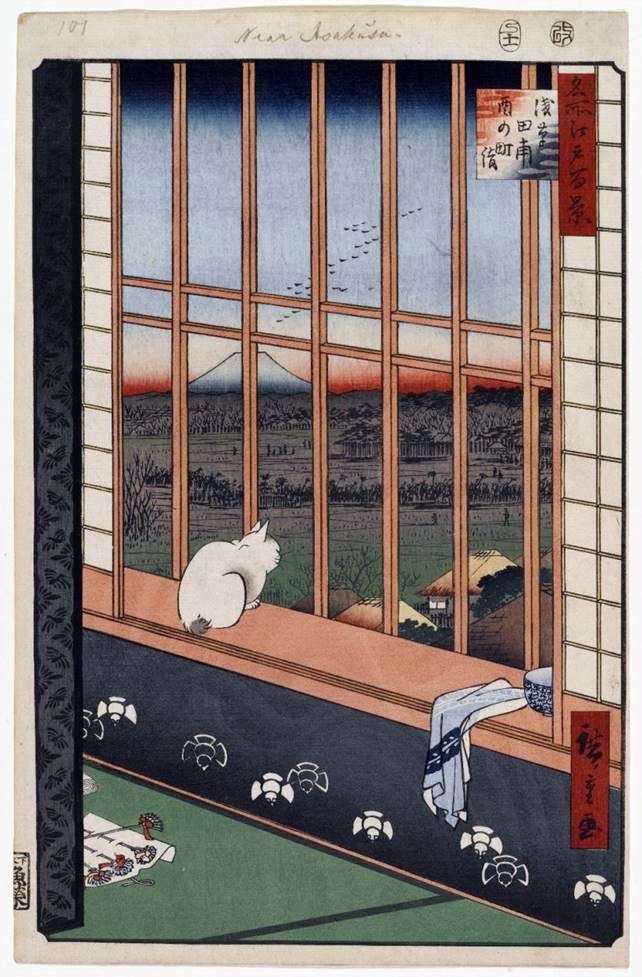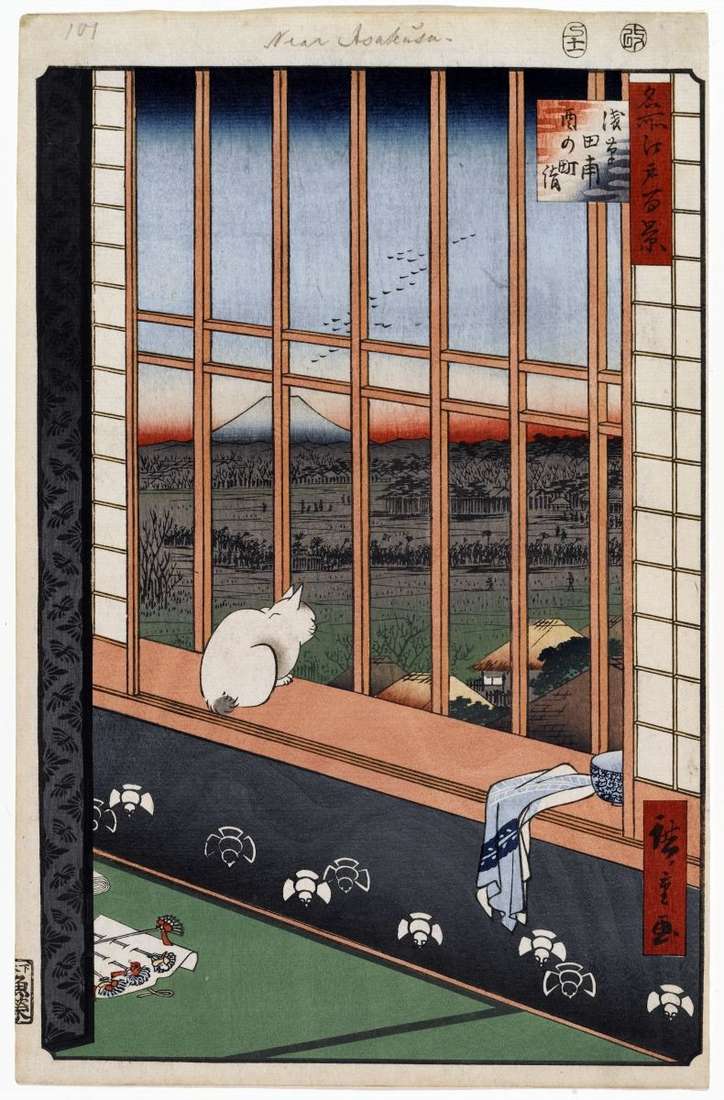
Color accents, not associated with the actual image, enhance the decorative sound of the sheets. This new quality, which developed in the work of Hiroshige only in the 1850s. Perceptions of many landscapes of the series as decorative works contribute to the bright multicolored colors, and, quite often, an unusual composition.
The composition of the engravings from “One hundred famous Edo species” is not entirely characteristic of Hiroshige’s work. Among the sheets of this series we come across two main types of landscapes: immediate sketches from nature and species in which decorative features predominate. In this series, Hiroshige comes to a new understanding for Japanese art of the tasks facing the landscape, an understanding not peculiar even for Hokusai.
 Pèlerinage de Torinomati dans les champs d’Asakusa – Ando Hiroshige
Pèlerinage de Torinomati dans les champs d’Asakusa – Ando Hiroshige Peregrinación Torinomati en los campos de Asakusa – Ando Hiroshige
Peregrinación Torinomati en los campos de Asakusa – Ando Hiroshige Torinomati Festival in rice fields of Asakusa by Utagawa Hiroshige
Torinomati Festival in rice fields of Asakusa by Utagawa Hiroshige Stores of fabrics in Odemmata by Ando Hiroshige
Stores of fabrics in Odemmata by Ando Hiroshige Morning mist in Mishima by Ando Hiroshige
Morning mist in Mishima by Ando Hiroshige Poet Ono-no Komati by Katsushika Hokusai
Poet Ono-no Komati by Katsushika Hokusai New Fuji in Meguro by Ando Hiroshige
New Fuji in Meguro by Ando Hiroshige Portrait of Santo Khedan by Racisanti Airy
Portrait of Santo Khedan by Racisanti Airy